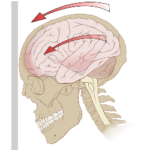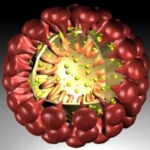
Non-alcoholic Fatty Liver Disease (NAFLD)
Are you having difficulty losing weight? Are you eating relatively healthy and exercising without getting any traction as well as experiencing fatigue, food cravings, and body weakness? Have you been told you have elevated cholesterol levels and that your blood sugars are rising? If so, you may be suffering from a condition known as non-alcoholic fatty liver disease (NAFLD). NAFLD is a growing epidemic, not only in the United States, but worldwide. Specialists are predicting that, within the next 15-20 years, NAFLD-related liver disease will replace hepatitis C and alcoholic liver cirrhosis indicated liver transplants.2
Much of the information in this document was gleaned from the book; “The Metabolic Reset Diet” by Alan Christianson, NMD. I would highly encourage anyone interested in NAFLD to purchase this book, especially for more information on the diet aspect of treating NAFLD as the diet component is the most important, but beyond the scale of this article.
What is NAFLD?
To put it simply, NAFLD is the process by which your liver stockpiles triglycerides (type of fat) within its cells to the degree of giving the liver a fatty appearance. This impedes proper liver function, creates inflammation, and generates metabolic disease (diabetes, hyperlipidemia, etc.).
How does this happen, you might be asking yourself? Well in order to understand how a condition like this can happen, you must first get a little biochemistry background, but I’ll keep it simple.
When we consume food, it tends to be in quantities that exceed our energy demands in that moment, so the food will be converted into a store-able form of energy called glycogen and triglycerides. Glycogen is only created out of excess glucose coming from carbs; however, triglycerides can be created out of excess carbs, protein, fats, ketones, and alcohol12. Triglycerides also contain a lot more stored energy than glycogen. When we skip a meal or delay breakfast our body will draw on this stored energy to keep us functioning. Triglycerides are converted into energy via a process called beta-oxidation and glycogen is required to fuel this process. You could think of triglycerides as the log and glycogen as the kindling12.
In our evolutionary history there have been periods of famine. Genetically we are geared to stockpile as much energy (glycogen, triglyceride) as we can during periods of plenty since there could be a period of famine right around the corner. Today we still carry with us that genetic code, but we are not going through periods of famine. Since triglycerides can be made out of any excess macronutrient (protein, fat, ketones, etc.) and glycogen is only made out of excess glucose there is a push towards the liver storing more triglycerides, eventually taking up so much space that glycogen is unable to be stored in the liver. Remember glycogen (kindling) is necessary to burn triglycerides (log).
How Would I know If I have NAFLD?
The gold standard is liver biopsy, which would be performed by a gastroenterologist. This is a high diagnostic intervention and I feel that most cases can be presumptively diagnosed through symptoms, lab values, and abdominal ultrasound. While NAFLD has a very long list of possible symptoms I will list the most common ones below:
- Fatigue – there is excess fuel being stored in the body, but without adequate glycogen to burn the triglycerides energy production is stalled.
- Food cravings, erratic appetite & erratic mood – primarily comes from fluctuating blood glucose levels secondary to the body’s less than optimal ability to generate glucose since glycogen isn’t being adequately stored.
- difficulty losing weight
- Weakness – there’s a loss of lean muscle tissue as it’s being replaced by adipose tissue and being broken down to supply the body with glucose. When the liver is not able to burn triglycerides in the absence of glycogen it will break down muscle tissue to get glucose.
- Irritable Bowel – core functions of the liver such as proper bile formation becomes abnormal leading to compromised gastrointestinal motility and microbial balance.
- Right sided shoulder pain – very common referred pain from gallbladder disease. When there’s improper bile formation biliary sludge and even stones can be created.
- myalgias (inadequate glycogen stores)
- Headaches – lack of optimal glucose production will lead to a headache as the brain uses glucose preferentially for energy.
- Insomnia – cortisol is necessary to break down muscle tissue into glucose and this will happen while you’re sleeping, cortisol is s stress hormone and should be at its lowest while we sleep.
- Waist to height ratio – there will be an increase in abdominal/truncal obesity to try and store all of the additional fuel that the liver is no longer able to accept. A waist/height ratio > 0.5 is the strongest early predictor of NAFLD.
The following laboratory findings are also common in NAFLD:
- Elevated fasting glucose – the liver isn’t able to store the glucose from your meals that day because there’s no room (triglycerides are taking up the space) in your liver or muscles.
- Elevated serum triglycerides – excess food will still be converted to triglycerides, but with the liver already full the triglycerides have nowhere to go.
- Elevated ALT – this is a liver enzyme that essentially indicates liver cell death, which is abnormal occurrence, however, in NAFLD there’s additional inflammation leading to an increase in liver cell death, hence a rise in ALT.
- Elevated GGT – similar to ALT and raises due to the same circumstances of liver cell death.
- Elevated fasting insulin – happens when there’s too much glucose in the blood, because insulin is secreted by the pancreas in order to tell the cells of the body to uptake glucose out of the blood, but the muscle tissues and liver aren’t responding due to being too full already with triglycerides.
Prognosis & Treatment Approach?
Approximately 20% of simple steatosis patients will progress to steatohepatitis, a condition where triglycerides are no longer able to be stored within the liver cell and is instead stored outside the cell. Unfortunately, steatohepatitis leads to fibrosis and cirrhosis, which increases one’s risk of developing a hepatocellular carcinoma or liver cancer1.
Currently, there is no FDA-approved drug for NAFLD, however, we’ve found that this condition is reversible. You do not have to progress to steatohepatitis or cirrhosis. You can also resolve the symptoms and abnormal lab findings that come with a diagnosis of NAFLD.
Lifestyle
- Movement – from walking to high-intensity training, it’s important to burn off energy so that there’s a greater demand for energy in the body. This will stimulate lipid oxidation and remove excess triglycerides from the muscles and liver. Start wherever you’re at, so if you mostly sit all day, begin walking even if it’s around the kitchen island…baby steps.
- Strength training – increasing lean muscle tissue will increase your basal metabolic rate (rate at which the body burns calories or energy) and muscle tissue provides a storage place for additional glycogen (kindling), which is necessary to burn triglycerides (log).
Diet
Weight loss and diet appear to be the most powerful combination for reversing NAFLD and reducing the odds of fibrosis.3-5 Weight loss of 7-10% body weight, along with improvements in transaminases (ALT), is associated with histological improvement of the liver.6-9 In a study of 293 biopsy-confirmed non-alcoholic steatohepatitis (NASH) patients, 90% of those who lost 10% or more of their body weight experienced resolution of NASH.6 For detailed diet plans, please refer to the book; “The Metabolic Reset Diet” by Alan Christianson, NMD.
- Calorie restriction – various types of restrictive diets that focus on a particular macronutrient (i.e. carbs, fats, protein, etc.) will not help this condition as all of these sources of fuel can be stored as triglycerides. That being said, there are some additional qualities to some of the macronutrients in regard to NAFLD. For example; protein much like glycogen can help to burn triglycerides and provide the essential amino acids necessary to do so and alcohol out of all 5 macronutrients is the most prone to be stored as triglycerides in the liver. However, ultimately, we must stop taking in so much fuel.
- Resistant starch (RS) – a type of starch that isn’t converted into glucose in the blood, but rather satiates your hunger and feeds you microbiome. Research has shown RS to regulate blood sugar, improve muscle mass, reduce visceral fat, lower body fat, and improve the health of the microbiome. RS is mostly found in legumes, plantains, potatoes, and green bananas.
- Intermittent fasting (IF) – only eat in an 8-10 hour window (16-14 hour of fasting) and avoid eating 2-3 hours prior to bed. An example of this would be: falling asleep at 10 pm, waking at 6 am, eating your first meal between 10 am – 12 pm, eating your last meal at or before 8 pm. IF has a number of benefits in the treatment of chronic health conditions like diabetes, obesity, digestive issues, heart disease, mental health, etc.
- Restrict or eliminate all alcohol – more so than any of the other fuel sources alcohol will be quickly converted into triglycerides.
- Completely avoid all soft drinks – In one study, soft drink consumption was a significant predictor of having fatty liver disease.3 Consider that the amount of fructose found in fruits is about 5-10% and when found in soft drinks or other sweet foods may be between 50% to 90%. Fructose as a sugar does not have to go through the same rate-limiting checks as glucose (sugar cane) and so directly feeds into triglyceride storage in the liver and adipose tissue. 4
Supplements
- Lipotropic complex – a combination supplement that provides the necessary nutrients for fat oxidation. Typically, you will also find liver specific herbs in here that will assist in upregulating detoxification enzymes within the liver.
- EGCg – regulates genes involved in fat oxidation and storage, as well as genes involved in insulin signaling and glucose metabolism. It’s been found to stimulate fat oxidation with as little as 300 mgs per day10.
- Garcinia cambogia – been shown to enhance fat oxidation while reducing de novo lipogenesis (i.e. convert excess energy into triglycerides) and helps to reduce appetite. These effects are achieved with as little as 300 mgs of hydroxycitric acid (one of the main components in garcinia cambogia)11.
References:
- Younossi ZM, Koenig AB, Abdelatif D, et al. Global epidemiology of nonalcoholic fatty liver disease-Meta-analytic assessment of prevalence, incidence, and outcomes. 2016;64(1):73-84.
- Zezos P, Renner EL. Liver transplantation and non-alcoholic fatty liver disease. World J Gastroenterol. 2014;20(42):15532-15538.
- Abid A, Taha O, Nseir W, et al. Soft drink consumption is associated with fatty liver disease independent of metabolic syndrome. J Hepatol. 2009;51(5):918-924.
- Ouyang X, Cirillo P, Sautin Y, et al. Fructose consumption as a risk factor for non-alcoholic fatty liver disease. J Hepatol. 2008;48(6):993-999.
- Kistler KD, Brunt EM, Clark JM, et al. Physical activity recommendations, exercise intensity, and histological severity of nonalcoholic fatty liver disease. Am J Gastroenterol. 2011;106(3):460-468.
- Vilar-Gomez E, Martinez-Perez Y, Calzadilla-Bertot L, et al. Weight loss through lifestyle modification significantly reduces features of nonalcoholic steatohepatitis. Gastroenterology. 2015;149(2):367-378.
- Dixon JB, Bhathal PS, Hughes NR, O’Brien PE. Nonalcoholic fatty liver disease: Improvement in liver histological analysis with weight loss. Hepatology. 2004;39(6):1647-1654.
- Promrat K, Kleiner DE, Niemeier HM, et al. Randomized controlled trial testing the effects of weight loss on nonalcoholic steatohepatitis. Hepatology. 2010;51(1):121-129.
- Palmer M, Schaffner F. Effect of weight reduction on hepatic abnormalities in overweight patients. Gastroenterology. 1990;99(5):1408-1413.
- J Am Coll Nutr. 2007 Aug;26(4):389S-395S. The effects of epigallocatechin-3-gallate on thermogenesis and fat oxidation in obese men: a pilot study. Boschmann M1, Thielecke F.
- Evid Based Complement Alternat Med. 2013; 2013: 751658. Published online 2013 Aug 6. doi: 10.1155/2013/751658 PMCID: PMC3748738 PMID: 23990846 Updates on Antiobesity Effect of Garcinia Origin (−)-HCA Li Oon Chuah
- Metabolic Reset Diet by Dr. Alan Christianson, NMD



